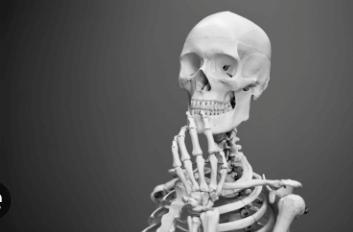The anatomy of the Concept Map: Bones of the Skull presents a fascinating interplay of structure and function, encapsulated in a concept map that organizes its numerous bones into a coherent framework. This visual representation not only clarifies the major components—such as the frontal, parietal, and maxillary bones—but also elucidates their interrelations and contributions to overall cranial stability and sensory functions. Understanding these connections raises pertinent questions about the implications of skull anatomy in both health and disease, prompting further exploration into how these elements work together to protect and support the vital systems housed within.
Overview of Concept Map: Bones of the Skull Anatomy
The skull serves as a protective framework for the brain and a foundational structure for the face.
Its complex skull structure comprises various cranial features, including the cranium and facial bones.
This anatomy not only safeguards neural integrity but also supports sensory functions and articulates with the mandible, enabling movement.
Understanding these components is essential for appreciating cranial protection and facial morphology.
Read More Cute:1djj9yudls4= Preppy Clothes
Major Concept Map: Bones of the Skull
Frequently recognized as the cornerstone of cranial anatomy, the major Concept Map: Bones of the Skull can be categorized into two main groups: cranial bones and facial bones.
The cranial bones include the frontal bone, occipital bone, temporal bone, parietal bone, sphenoid bone, and ethmoid bone.
Facial bones comprise the nasal bone and zygomatic bone, essential for structure and function in the human skull.

Bone Functions and Characteristics
Within the human skull, bones serve multiple critical functions, including protection, structure, and support.
The protection functions of the skull safeguard the brain from trauma, while its structural characteristics provide a framework for facial features and organ housing.
Additionally, these bones facilitate muscle attachment, enabling movement and expression.
Understanding these roles is essential for appreciating the complexity of cranial anatomy and its protective capabilities.
Visualizing the Concept Map
To effectively understand the complex anatomy of the skull, visualizing a concept map can enhance comprehension of its structural relationships and functions.
Utilizing skull visualization techniques alongside advanced concept mapping tools allows for a clearer representation of the intricate connections between various cranial bones.
This approach not only aids in learning but also fosters a deeper appreciation of the skull’s anatomical significance.
Read More Cute:1dlx6at47tg= Christmas Fox
Conclusion
In summary, the concept map of the Concept Map: Bones of the Skull serves as an essential framework for understanding cranial and facial anatomy. Each bone, from the prominent frontal to the delicate zygomatic, contributes to the intricate architecture that protects the brain and shapes human identity. This visual representation not only facilitates comprehension but also evokes a deeper appreciation for the structural harmony inherent in the human body, reminiscent of a well-orchestrated symphony where every note plays a vital role.

